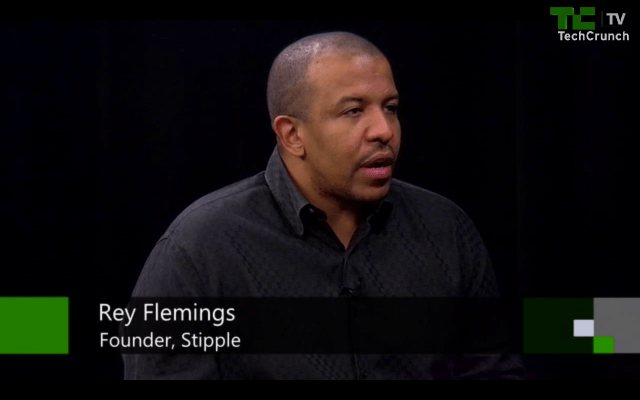Editor’s Note: TechCrunch columnist Semil Shah currently works at Votizen and is based in Palo Alto. You can follow him on Twitter @semil
“In the Studio” this week welcomes an entrepreneur who, while working for a major Hollywood celebrity, saw first-hand just how explosively engaging online images could be, an experience that provided him with the key insight into his current venture and why, even today, he has signs in the office that read “it’s the photos, stupid” as a fun, constant reminder to keep focus on their mission to help turn online pictures into a dynamic business engine.
Rey Flemings, the founder and CEO of San Francisco-based Stipple, couldn’t have timed his venture more perfectly. Two of today’s hottest consumer startups are all about, at their core, images. We all had some sense that pictures would provide one of the most attractive, thinnest edges of the wedge to create new networks, contexts, and experiences, and in a short period of time, both Instagram and Pinterest have, in their own ways, helped users create, enhance, share, and discover engaging images. If a picture is worth a thousand words, a successful photo-sharing startup is potentially worth half a billion dollars in private valuations, perhaps even more.
Every time we upload an Instagram or repin an image on Pinterest, however, what happens to those images? We all now have tools to create, collect, and comment around photos, but Stipple exists to solve a very specific problem — syndication and distribution control of an image as it travels across the web. To simplify the company’s image tagging technology, Stipple marks images with their own unique fingerprints, a technique that could help a brand control context and interaction around that image, provide attribution for user-generated photography, and make photos searchable, at large.
Photos are of critical importance to these startups, as well as incumbents like Facebook and Twitter. Given all the activity in the space, these companies will need to develop strategies for pushing the envelope on how images are tagged and how we as users can interact with them in the future. You can think ahead and also consider movies, television, and different screens.
There are other players in the space, such as Luminate and ThingLink (for a longer discussion on the problem and technology, see this epic Quora thread), and the way Flemings see things, people will continue to take new pictures and send them around the web, and no matter where they originate or where they go, the opportunities to tag them are infinite — and Stipple will be there to help. For founders, developers, and investors looking at photos broadly or as piece of a larger strategy, Flemings provides an extremely insightful view into the challenges with and opportunities around online images today.
